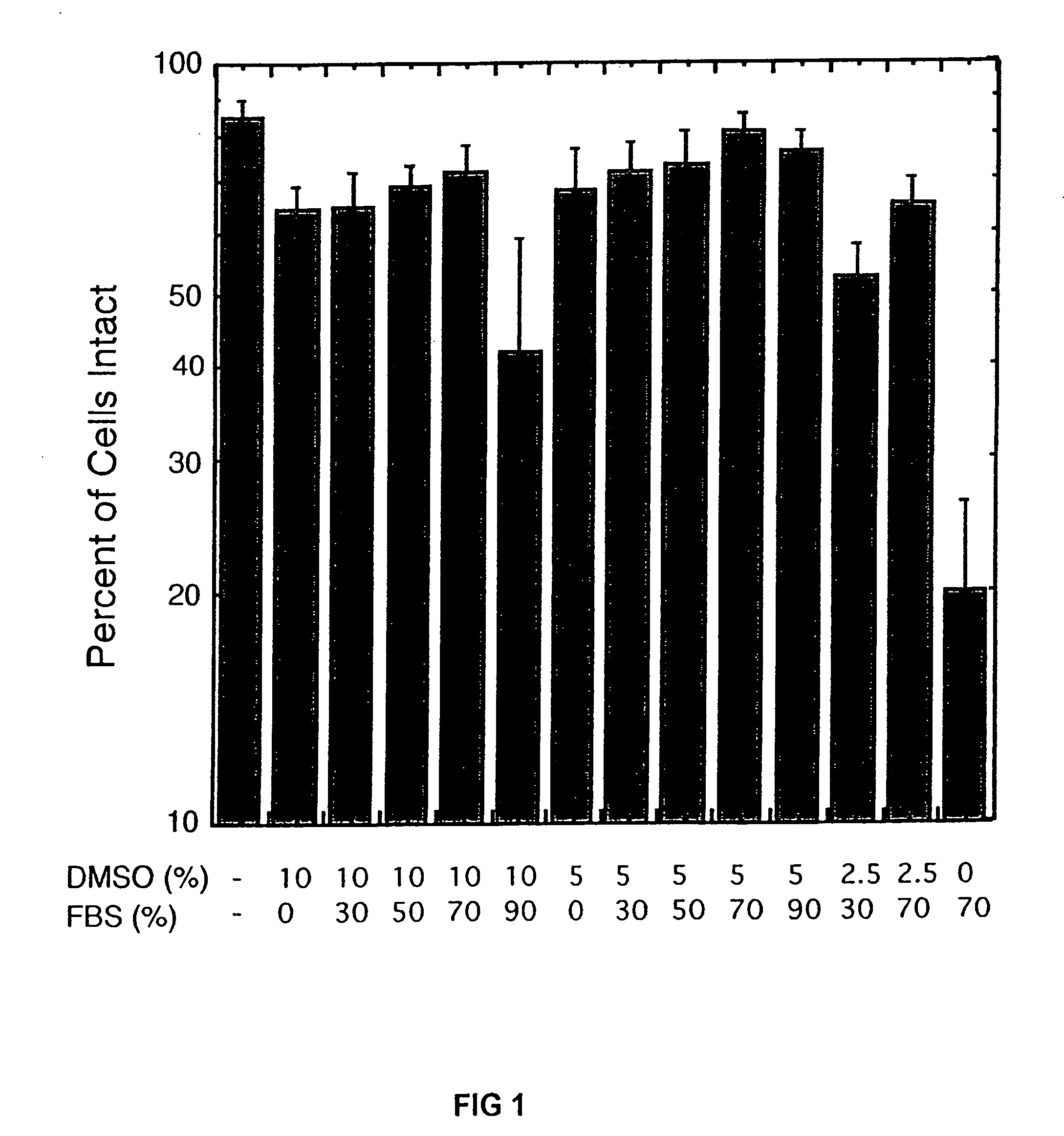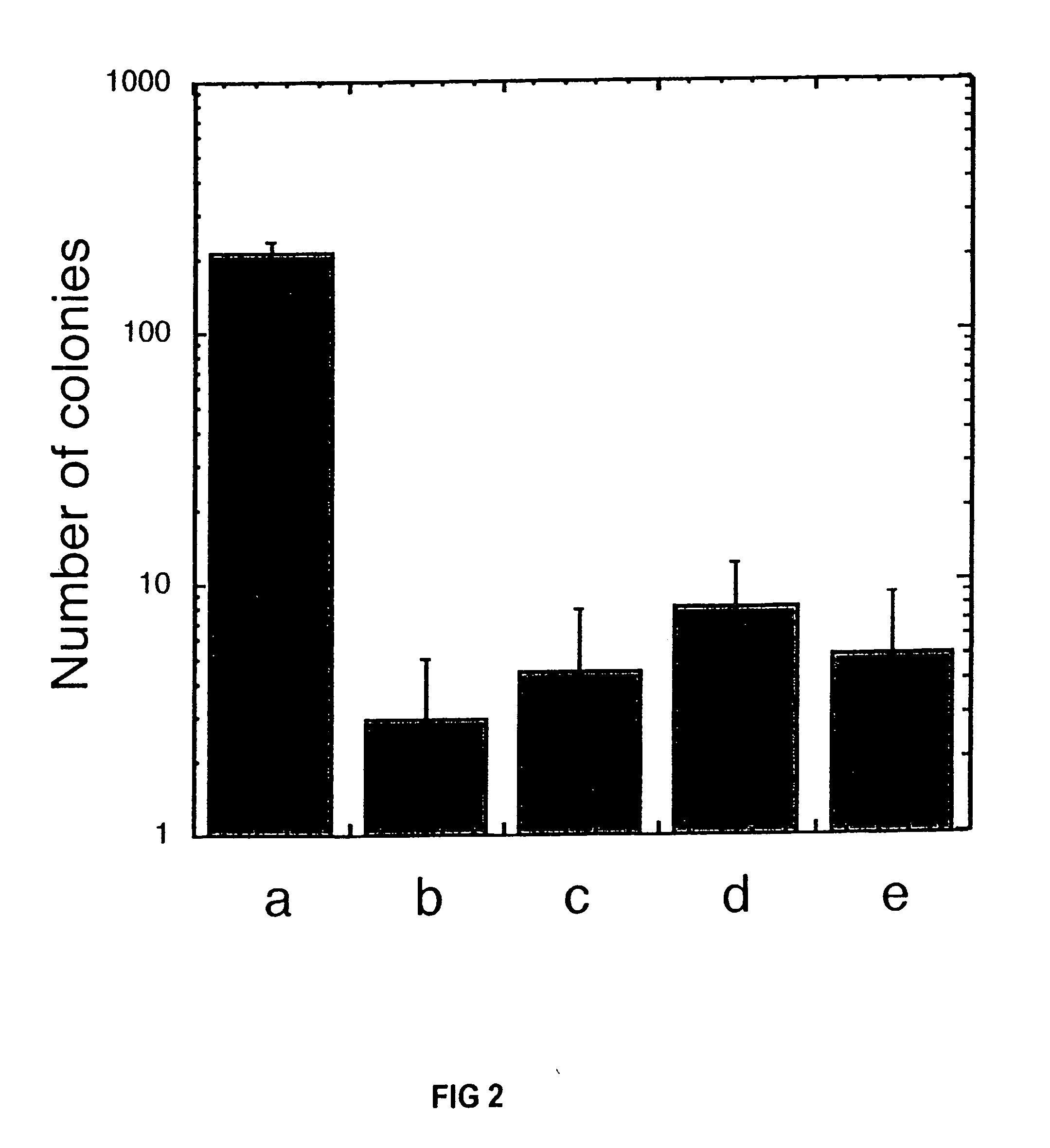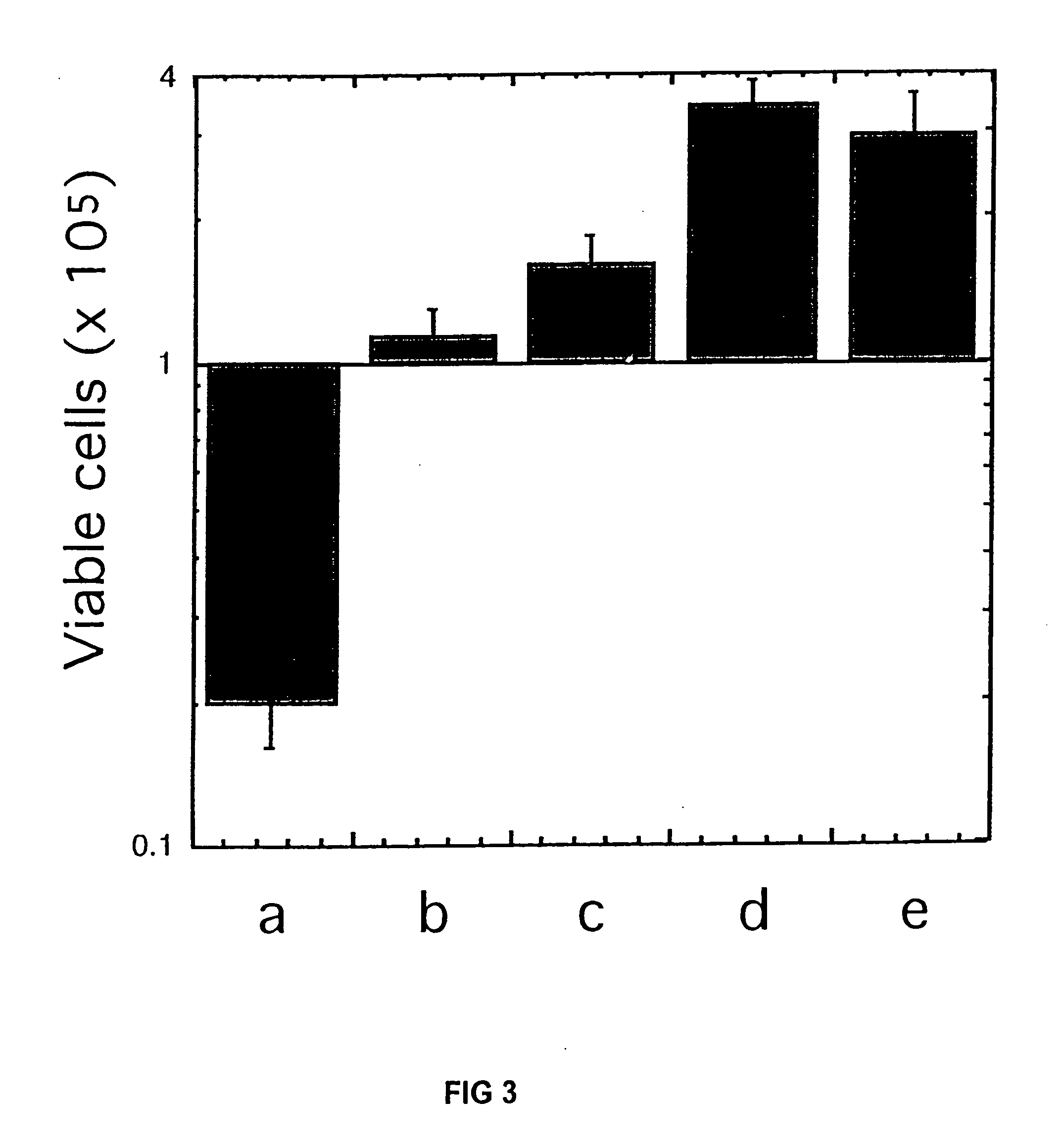Cryopreservation of pluripotent stem cells
- Summary
- Abstract
- Description
- Claims
- Application Information
AI Technical Summary
Benefits of technology
Problems solved by technology
Method used
Image
Examples
example 1
Cell lines and Preparing Feeder Cells.
[0066] The HES cell lines H1 and H9 were derived from the inner cell mass of blastocyst stage embryos (Thomson et al. 1998). HES cells were cultured as undifferentiated cells using HES medium, which is capable of supporting growth and inhibiting differentiation and MEF feeder cells or CM / F+medium on Matrigel™-coated plates. HES cells were used between passage number 26 and 40. MEF cells were isolated as described (Thomson et al. 1998) and used between passage 1 and 4. MEF feeder cells were prepared by coating a tissue culture plate with 0.1% gelatin solution, 2 ml / well to a 6-well plate, and 0.5 ml / well to a 24-well plate. After coating, the plate was incubated overnight in a 37° C., humidified incubator with 5% CO2 for 24 hours prior to plating irradiated MEF cells. 2×105 irradiated MEF cells were added to 2.5 ml MEF medium (90% DMEM, 10% FBS, and 1% MEM non-essential amino acids solution) in each well of a 6-well plate. MEF cells were incuba...
example 2
Preparing Matrigel™ Plate.
[0067] To prepare a Matrigel™ plate, a tube of Matrigel™ stock (2 mg) was taken directly from the −20° C. freezer. Matrigel™ was obtained from Becton Dickinson, San Jose, Calif. The Matrigel™ pellet was immediately resuspended in 6 ml ice cold DMEM / F12. All chunks in the mixture were eliminated through vigorous pipetting. A 1 ml aliquot of the Matrigel™ mixture was added to each well of the 6-well plate. The plate was maintained at room temperature for one hour or overnight at 4° C. before use.
example 3
Preparing Conditioned Media (CM).
[0068] MEF conditioned media (CM) was prepared by coating a T75 flask with 10 mL 0.1% gelatin solution and incubating for 24 hr in a 37° C. humidified incubator with 5% CO2 prior to plating irradiated (35 Gy γ radiation) MEF cells. Irradiated MEF cells (3×106) were added to 15 ml MEF medium in the T75 flask and incubated overnight at 37° C. The MEF medium was aspirated and discarded. HES medium (20 ml) without bFGF (80% DMEM / F12 medium, 20% Knockout Serum Replacement, 1% L-glutamine solution, and 0.1 mM MEM non-essential amino acids solution) was added to the MEF cells and incubated overnight. The CM was then collected and replaced with 20 ml HES medium without bFGF. CM was collected daily for up to 2 weeks. bFGF was added to the CM to a final concentration of 4 ng / ml to make CM / F+.
PUM
 Login to View More
Login to View More Abstract
Description
Claims
Application Information
 Login to View More
Login to View More - R&D
- Intellectual Property
- Life Sciences
- Materials
- Tech Scout
- Unparalleled Data Quality
- Higher Quality Content
- 60% Fewer Hallucinations
Browse by: Latest US Patents, China's latest patents, Technical Efficacy Thesaurus, Application Domain, Technology Topic, Popular Technical Reports.
© 2025 PatSnap. All rights reserved.Legal|Privacy policy|Modern Slavery Act Transparency Statement|Sitemap|About US| Contact US: help@patsnap.com



